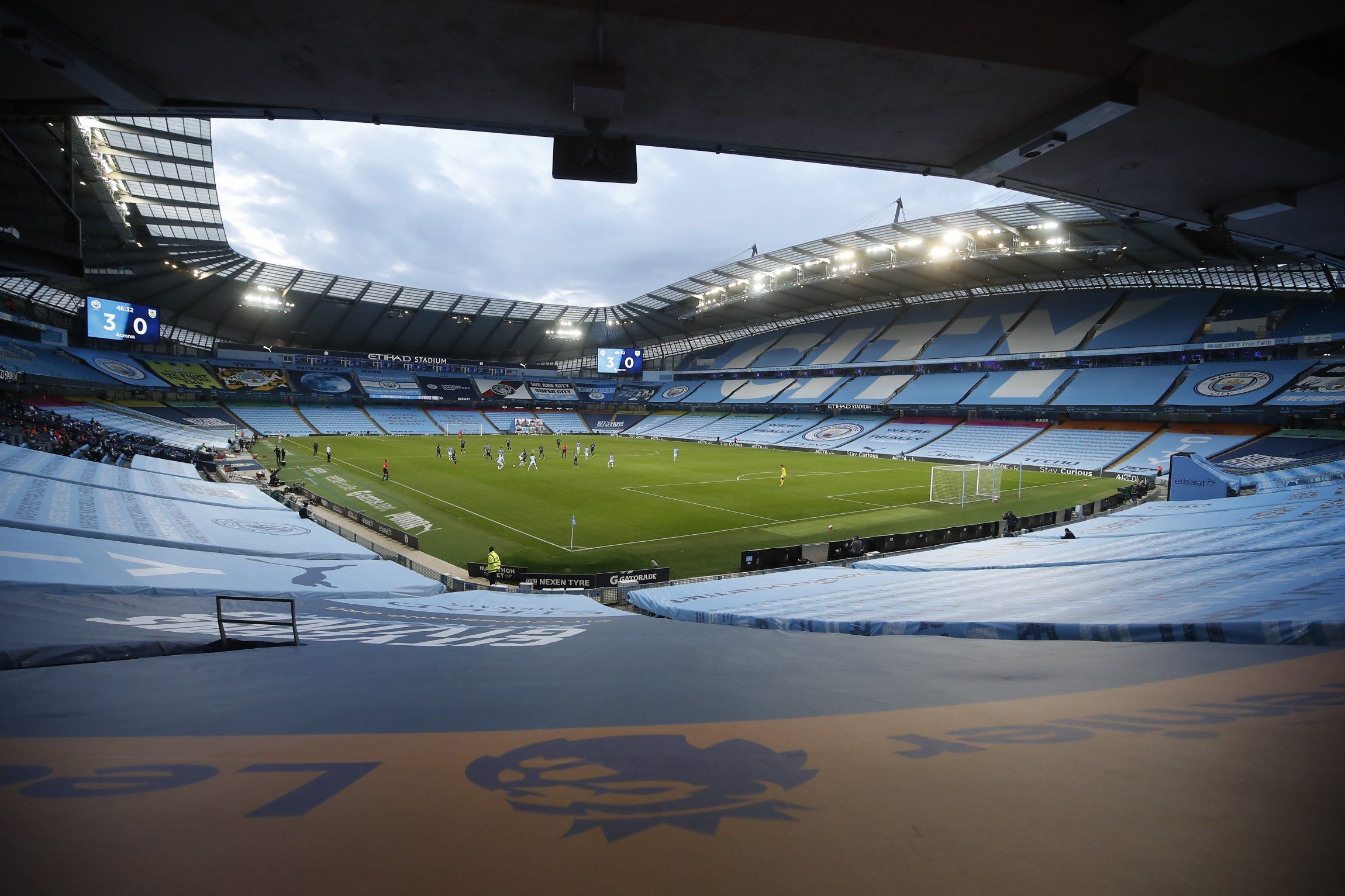Key information about Etihad Stadium
The City of Manchester Stadium, also known as Etihad Stadium for sponsorship reasons, was built in 2002 and is the home of Manchester City football club. The ground is located in the Etihad Campus in Manchester and was originally built for the 2002 Commonwealth Games, transforming into a football pitch after that.
Its current capacity stands at 55,017 and has a pitch that measures 105m by 68m. The Etihad Stadium’s pitch is covered with hybrid grass with undersoil heating installed and no running track surrounding it.
The record attendance of 54,693 supporters was set during Manchester City vs Leicester City on 6 February 2016.
A history of Etihad Stadium
Even though it now houses one of the biggest teams in the Premier League, the Etihad Stadium was first designed with a different purpose. Initially, the plans for a new stadium in Manchester were formulated back in 1989 as part of the city's bid to host the 1996 Summer Olympics. Failing that, they also applied for the 2020 iteration but didn’t succeed once again.
But as they say, third time's the charm and in 2002, the Etihad Stadium would finally get its shot as host for a big event, albeit it were the Commonwealth Games and not the Olympics. After that, it was converted into a football stadium, set to be used by Manchester City from the 2003/04 season onwards as the Citizens were looking to move to a more modern ground than Maine Road.
The reconstruction started immediately following the Games and sections of the tracks were removed, set to be reused at other athletics venues. The internal ground level was also lowered so an additional tier of seating could be added on the already-constructed terracing. The three temporary stands that had a capacity of 16,000 were replaced with a permanent one of a rather similar design to the existing one at the southern end.
All of that took about one year to finish, ultimately increasing the capacity, making the stadium functional for football games and enabling Man City to move in for the start of the 2003/04 campaign. As we now know, the 2008 takeover made the club one of the wealthiest outfits in the world and it had a direct impact on the stadium as well.
Just a couple of years later, in March 2010, Manchester City signed an agreement with Manchester City Council to allow a £1 billion refurbishment that would be led by architect Rafael Viñoly. That year, the Etihad Stadium saw numerous improvements with the renovations of both the pitch and the hospitality areas while also renegotiating the lease and acquiring the naming rights.
More expansion followed in the 2014/15 season with construction commencing on the South Stand in April 2014 and being finalised for the start of the 2015–16 campaign. In November 2018, further discussions were had with a view of building a still larger two-tier North Stand without executive boxes or corporate hospitality lounges included.
This project would boost the maximum capacity to around 63,000, making the Etihad Stadium Britain’s third-largest club ground, only behind the iconic Old Trafford and potentially the London Stadium, but still slightly bigger than Tottenham Hotspur Stadium.
Tickets to watch Manchester City at Etihad Stadium
All tickets to watch Manchester City at the Etihad Stadium can be found on the club’s official website. The price varies and the Citizens’ games are among the most expensive ones in the Premier League, on average costing around £70 for adults.
They do, however, offer memberships and season tickets that can get you discounts over the course of the season.
Related links
https://www.mancity.com/ - Official website of Manchester City
https://tickets.mancity.com/ - Manchester City Ticket Office

